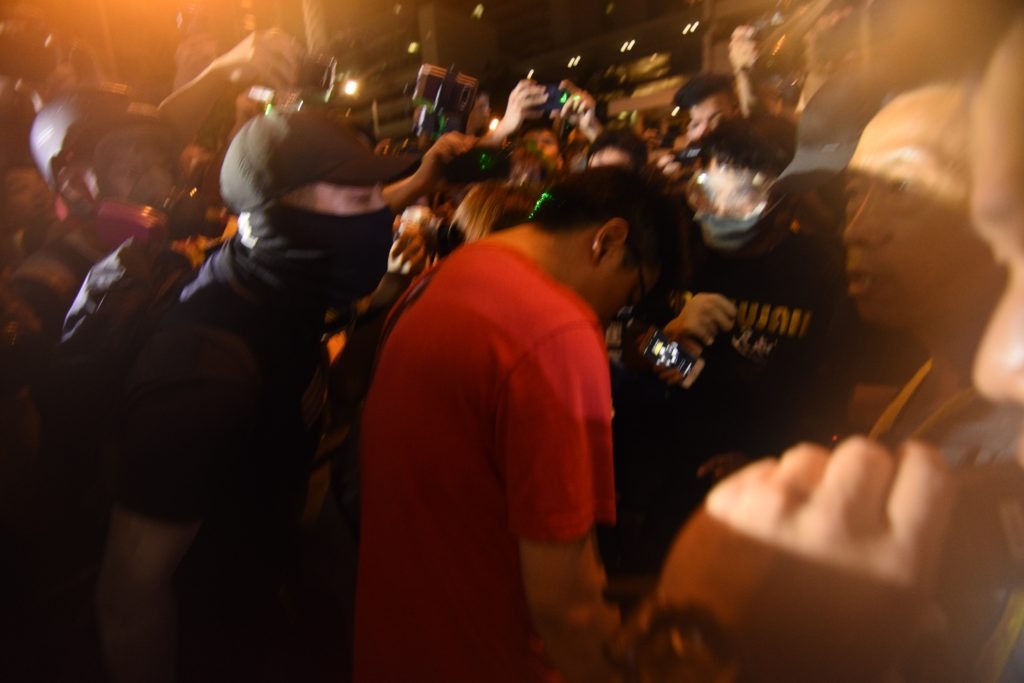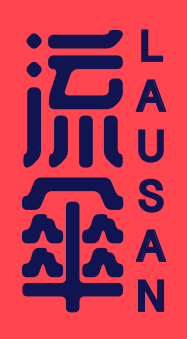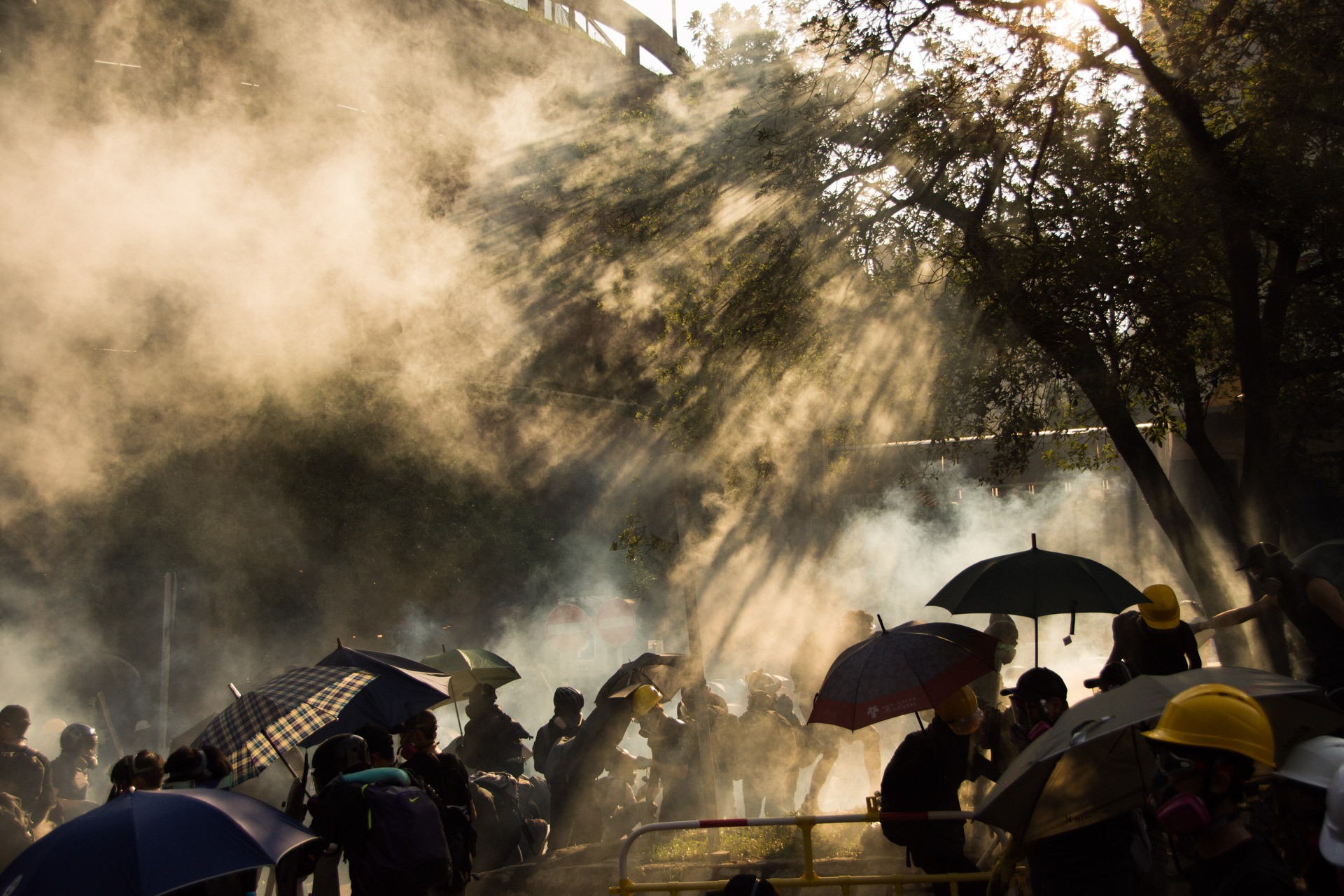Editor’s note: Alex’s photos have been a part of Lausan since its inception. Braving heat, rain, and fire to capture the struggle on the frontlines in order to amplify Hongkongers’ stories to international audiences, her work is undoubtedly visceral. We are proud to present her photo essay below. You can view Alex’s website and contact information here.
Tomorrow marks the 12-month anniversary since Hong Kong’s historic movement kicked off. A year of hope, a year of anger, a year of division, a year of solidarity among strangers—a year that turned our lives upside down
I was working an office job in Admiralty when the protests started in June last year, having just moved to the city two years prior. Comfortably settled into a life of routine, I had watched in awe with colleagues as teargas and violence burst onto the streets under behemoth office skyscrapers.
Some time around September (two months after the storming of LegCo, three months since the first clashes with police, a good half year since the anti-extradition campaigns started in earnest) it finally sinks in that this would be the new normal. Politics on the weekdays, teargas on weekends; protests, followed by new bouts of unprecedented violence, followed by adjustment. Rewind. Repeat.
By now, I’ve been out shooting at all hours of the day, from the ungodly morning hours to humid late evenings. I’d like to say I’m desensitised to most of it, but that isn’t quite true. With my fellow journalists who have been on the streets, weekend after weekend, month after month, it’s more accurate to say we’ve fine-tuned our days to the routine of the city; a timely rhythm to march to, from the start of the rallies in the afternoon to the last volleys of teargas in the evening.
What follows is a photo essay shot between June 2019 and January 2020 that capture the protest through different hours of the day.
Morning
Usually, nothing starts this early. The early hours are saved for accepting the aftermath, for commuting to work while still coming to terms with the evening before. Graffiti-covered tram stops, chunks of pavement, ripped up sidewalk fences, the streets marred by the previous evening’s violence. But as it is in the aftermath of a bad typhoon, sanitation workers night by night pick the city up and dust it off for another day.
That all changed when I witnessed the first early morning clashes between police and protesters at the siege of Polytechnic University.
Having talked my way around the police lines the night before, I’d awoken at 4:30 AM on the morning of November 17, after a few hours of restless sleep on a yoga mat. I’d watched the thin morning light crawl across campus, the school slowly coming back to life after a tense night. A roaring fire engulfed the main entrance stairs, an attempt to deter the “Flying Tigers”, HKPF’s paramilitary wing, from charging the school. Protesters and students would make their first attempt to escape that morning, but in the end, the infamous standoff would last another four days.



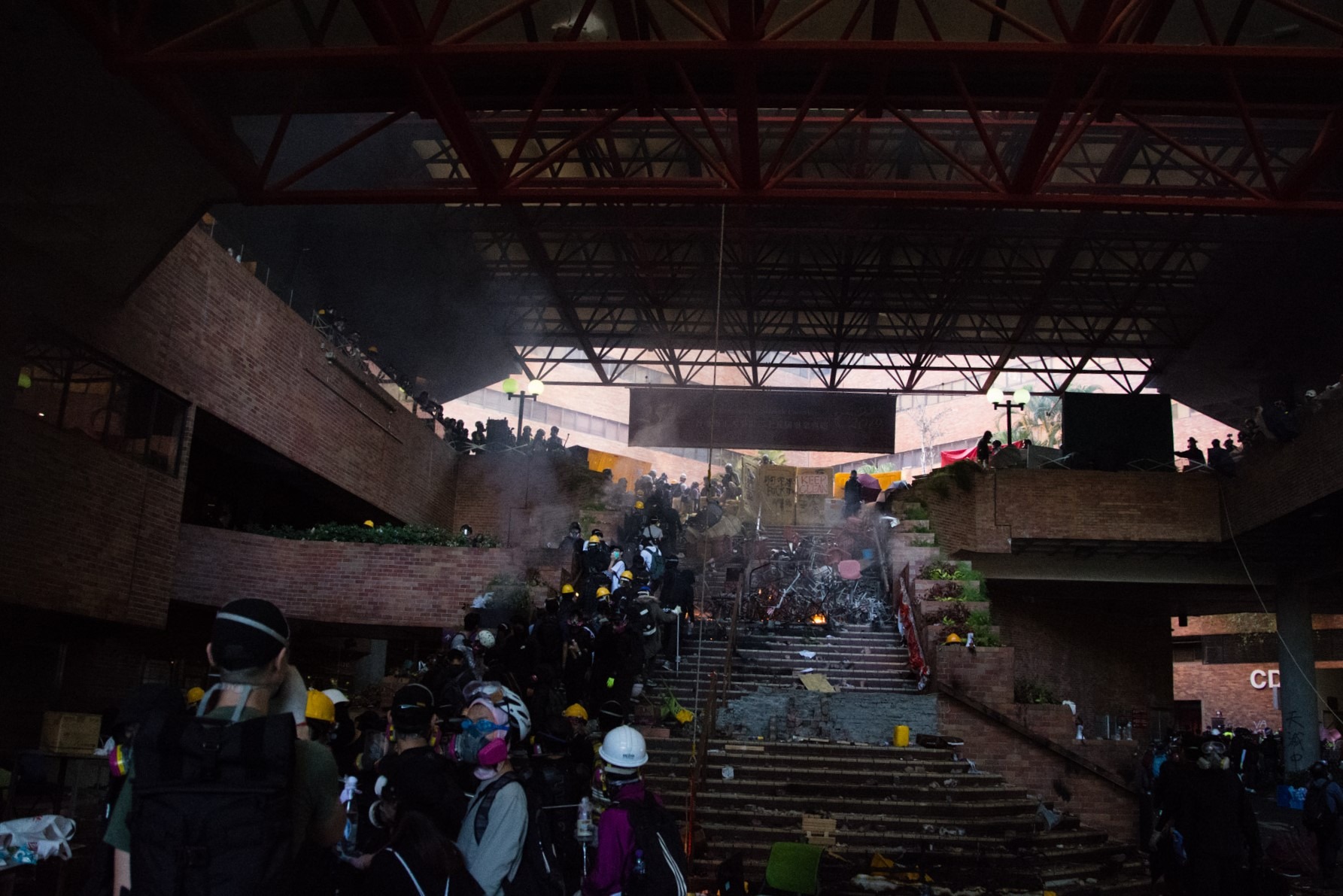


Noon
12:00 PM – 3:00 PM
Mid-day in Hong Kong is sticky, humid and unbearably bright.
Protests in Central District, the city’s fancy, high-end shopping and business area, started taking place in mid-November last year, with white-collar workers crowding outside luxury shops of the high street in facemasks and officewear. Gleaming shop windows became the newest surface for protest slogans, with front-liners setting up barricades and roadblocks to lock out police.
The sight is a strange juxtaposition, but it reflects the way politics had crept into each and every aspect of our lives, how impossible it is to turn away and how intricately every corner of the city has become entangled in the upheaval of our mundane routines.
We witness, we react, we accept. And then we live with it.





Afternoon
When the Anti-ELAB protests started in earnest last June, there was a mix of exhilaration and hope amongst people anticipating the bright-eyed birth of a new era. Regular marches were held on the weekends, with turnout in the hundreds of thousands.
The crowds marched closely and tirelessly, chanting the same slogans in the suffocating afternoon heat. The streets were filled sidewalk-to-sidewalk, an overwhelming tide of people and emotions—anguish, and hope, and indignation at government incompetence and police impunity.
I’m usually perched on top of a footbridge, shooting down at the crowds flowing below, and jostling for space among dozens of other visual journalists. 2:00 PM marks the start of the work day as we’d follow the crowds for long 8-hour stretches, resting whenever possible before the skirmishes begin.
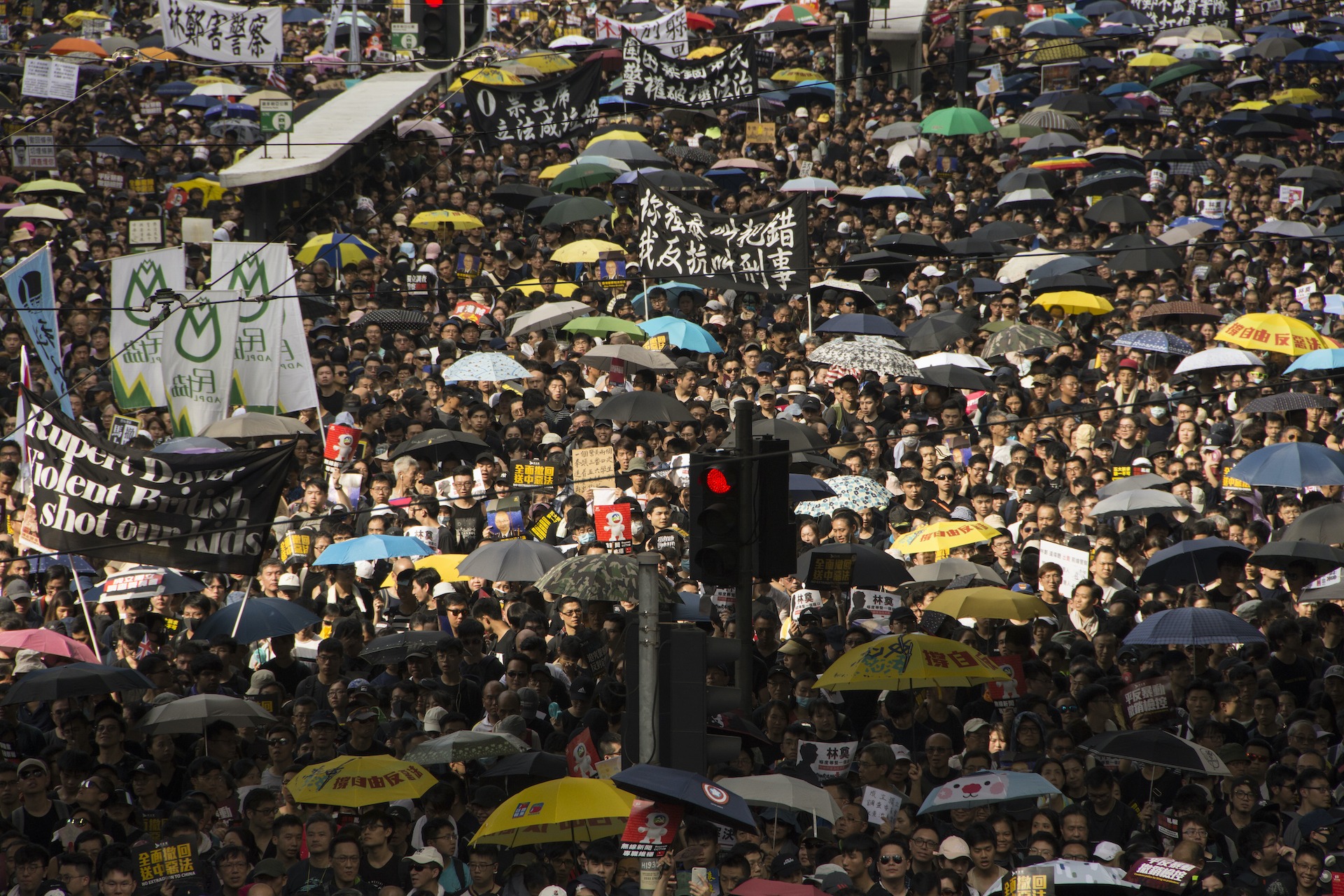







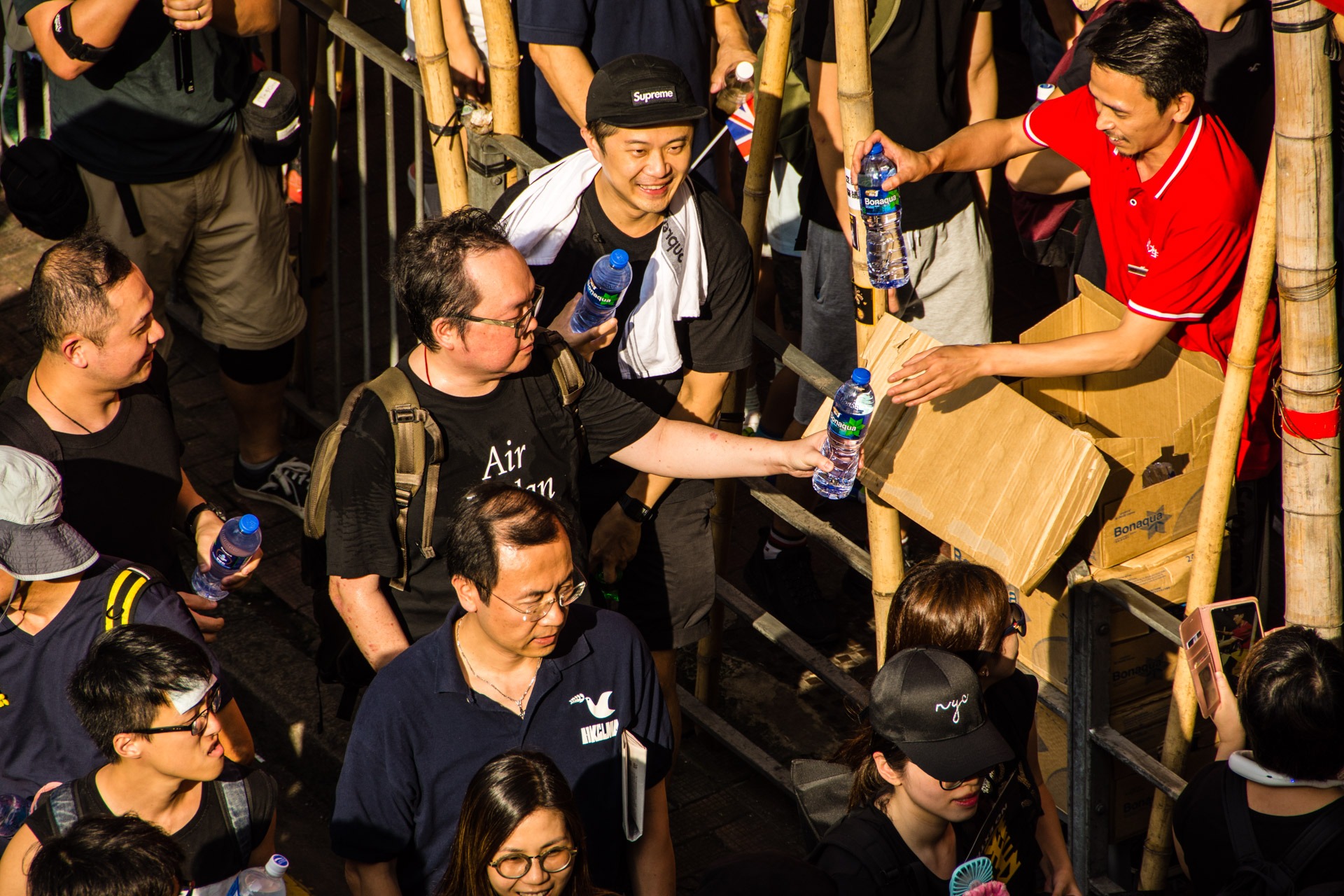






Dusk







Evening
7:00 PM – 11:00 PM
The imagery of Hong Kong’s iconic neon lights and the brightly-lit skyline was something I’d been familiar with since I was a teenager. Tightly-built apartment blocks, narrow streets, and skyscrapers lighting up the harbour defined my earliest memories of the city.
Mongkok, the densely-packed heart of Kowloon peninsula, had become a hot spot for police clashes, while the busy shopping district of Causeway Bay became the scene for burning barricades and countless rounds of teargas.
As night fell protestors fell into pitched running battles with riot cops, using barricades made of bus stops, bins, and sidewalk guards—the city itself weaponised.








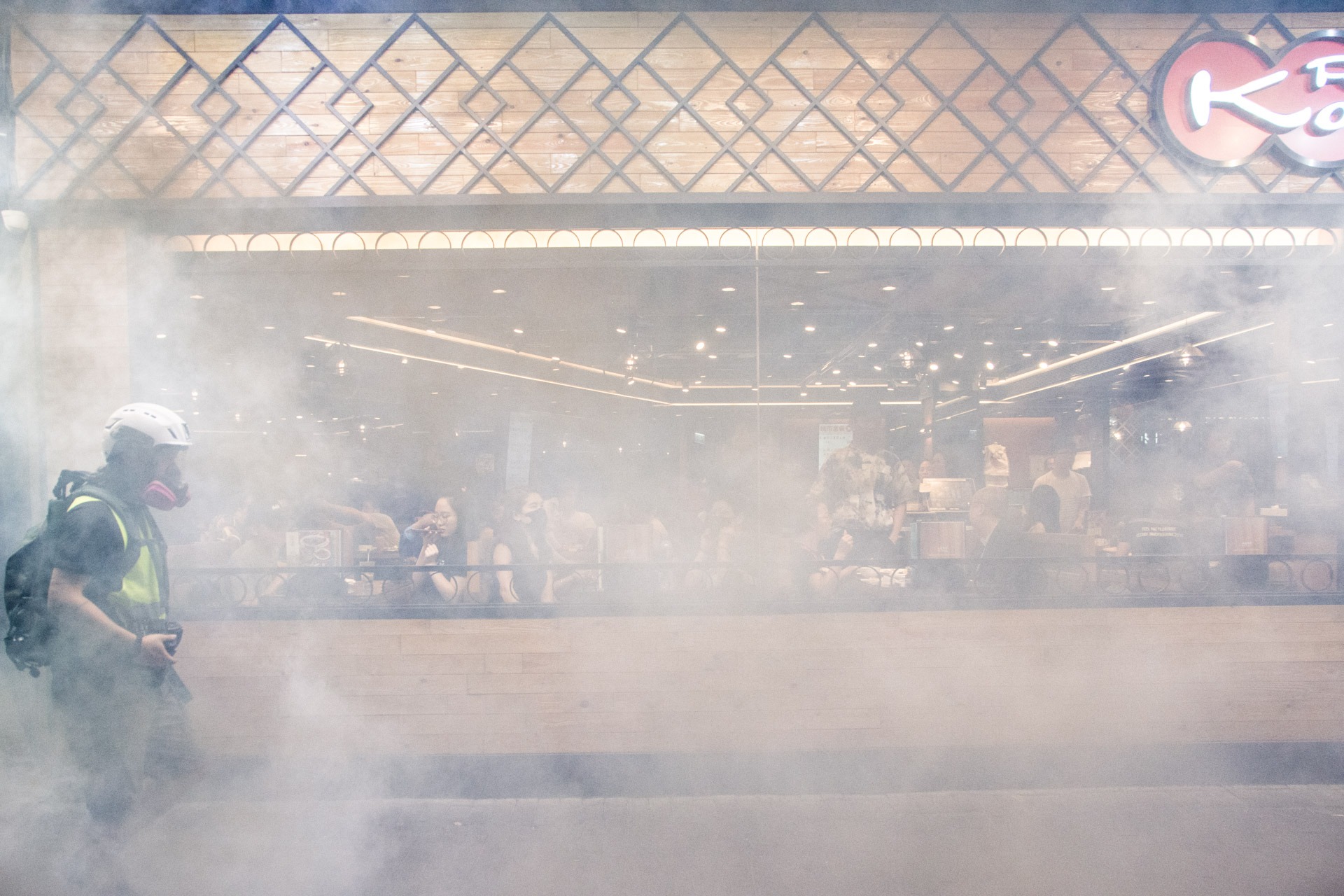





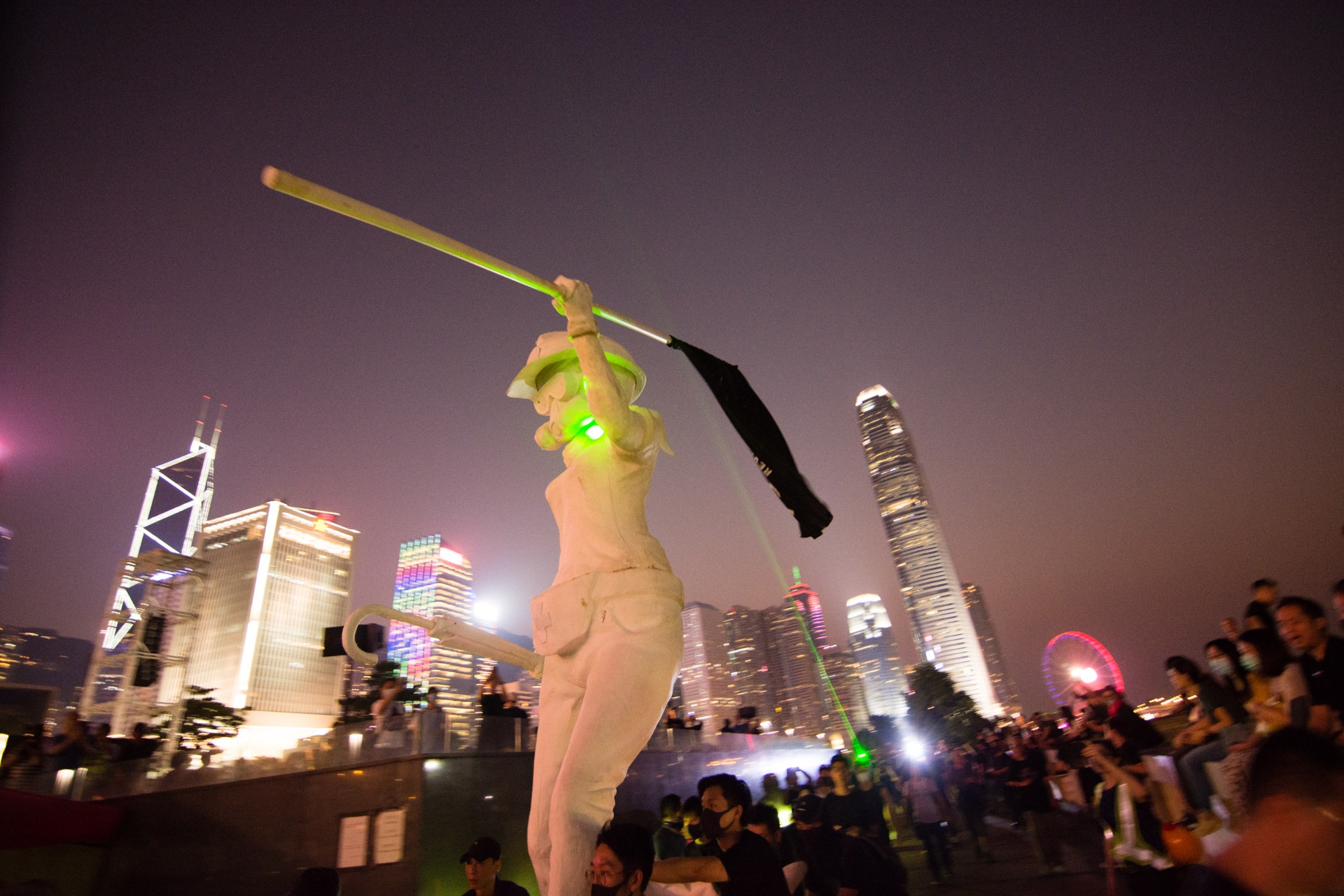


Midnight
In the time between the start of the movement and today, there have been over 9000 arrests, over 10,000 canisters of teargas deployed, and over 64 weekends of marches. While the pandemic put a temporary pause on the movement, it is now roaring back with fury at the imminent passing of the National Anthem Bill and National Security Law. It’s hard to see how this could end, and it’s hard to see where the movement will find victory, but Hongkongers’ relentless fight for a say in their own governance has been incredible to witness.
No matter where we live, or which side we stand on, the past year has changed the city. We’ve made space for the violence, we invite history into our living rooms, and let the sound and fury live in our heads.
I can’t go back to being the person before all this started—I don’t think any of us can. We can only help each other, as we always have, head into an increasingly uncertain future.
